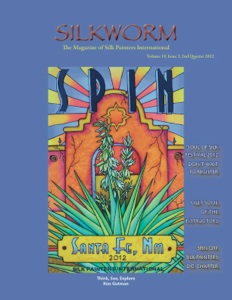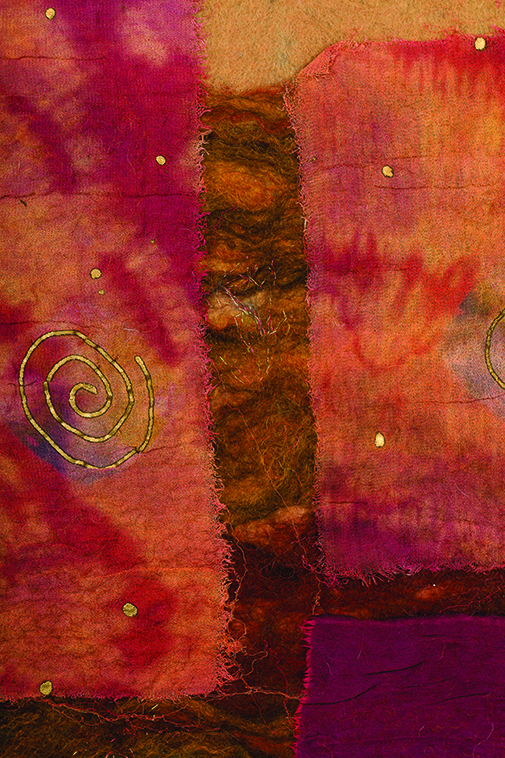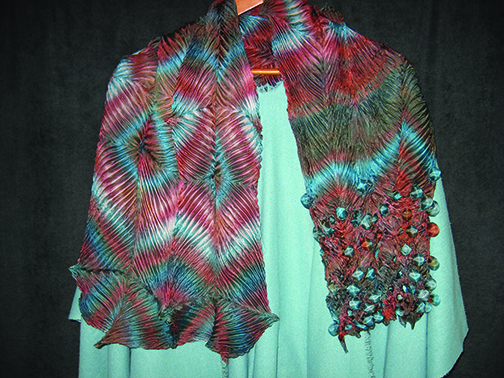Silkworm Magazine, Volume 19, Issue No. 2, June 2012
|
More spotlighting of the instructors for the 2012 conference. Original SPIN co-founder Diane Tuckman teaches painting silk accessories, Diane Lawrence teaches painting silk skies. Carol Garnand, Geri Forkner and Vicky Luffman teach nuno felting on silk. Irma Braun-Hampton and Jacqueline Bradley teach shibori and much, much more. |
 |
In This Issue |
|
Nuno Detail by Carol Garnand |
Nuno Comes To Silk In Santa Fe 2012! The attendees of the Silk in Santa Fe festival are fortunate this year. There are three nuno felting instructors teaching this wonderful art.
|
|
Wrap by Irma Braun-Hampton |
Arashi Shibori with Irma Braun-Hampton Irma Braun-Hampton was trained in fashion design and fashion manufacturing. After designing for a fashion house she opened her own boutique with imported clothing from Indonesia and India, along with designer jewelry, teas, and a small line of her own designs. It was around 1984 while working as a fashion designer, that she first discovered silk painting at trade shows. She became acquainted with silk painters who were selling their own lines of boutique clothing. Her mentor and teacher, Ella Ott, was a German lady who lived in several places throughout Africa and Asia, accompanying her husband on diplomatic tours. According to Irma, Ella Ott surrounded herself with the art she found there and started out with batik in Africa and Indonesia. She learned about silk painting in Eastern Asia and upon her return to Germany in the mid-1970s concentrated on this art form. By that time the French dye suppliers Dupont and Sennelier had broadened their market in Germany and easy access to the dyes helped spread the silk painting fever. Says Irma, “Sadly, my mentor passed away last year. She always had an answer when I felt stuck in a project. I credit her for leading me to experiment, break painting rules and challenge myself.” (To read more, go to Vol. 19, Issue 2.) |
|
Creating Websites in WordPress with Tim O’Neill |
Are you interested in creating a web presence as an artist? At Silk in Santa Fe, you will have an opportunity to create a website. Artist Tim O’Neill will be teaching a class on crafting your own WordPress website or blog. In the workshop you will actually create your own WordPress website. According to Tim, “You will be able to see how simple it is to get a new, sharp looking and functional site. We also will provide some resources should you decide you don’t want to maintain your website yourself.” Tim has answered a few burning questions about the benefits of using a website or blog for furthering your art career. Q. How long have you been an artist? A. I began my art career in high school when I began working as a photographer and darkroom technician for a local screen printing company in 1976. When I graduated I went to the military as a combat photographer and have always had my hand in art somewhere since then. Q. Do you have a web site or a blog or both? How do they differ? Is one more effective than the other? A. I have both. Generally how they differ is that a blog is updated more frequently than your traditional site. Outside of that they are much the same. Having said that, the new style of blogs can allow someone to use just a blog. (To read more, go to Vol. 19, Issue 2.) |

